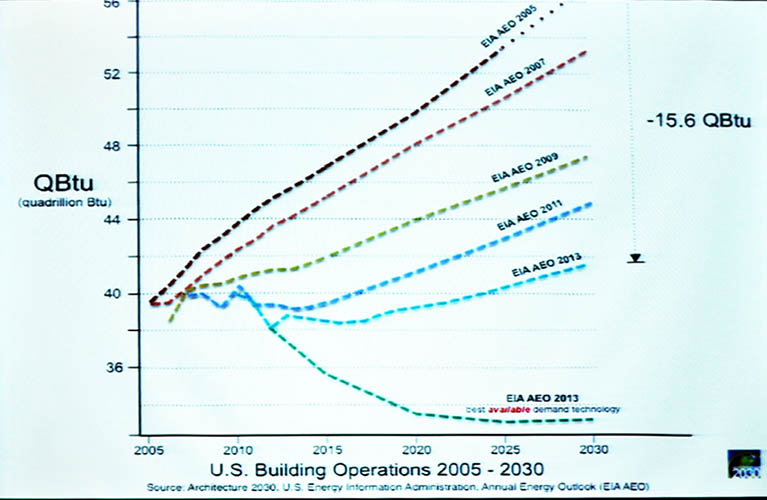
A photo of a slide from Edward Mazria’s San Antonio presentation depicting projected estimates of how much energy will be used for building operations in the U.S. The lowest line shows the potential for lower energy use through the use of the most efficient “demand technologies,” a.k.a. lighting, HVAC equipment, appliances, etc. (Source http://therivardreport.com/architects-no-one-else-can-solve-climate-change/ )
I attended yesterday’s Sustainable Urban Development lunch hosted by AIA San Antonio, where Ed Mazria, of Architecture 2030, spoke about the global energy situation and it’s potentially risky relationship with climate change. There was good news.
Though there still exists a significant risk of global warming and all the associated negative changes that may lie ahead, the possibilities for lowering energy demands abound and architects continue to lead the charge that could help avert the disaster scenarios. Buildings can and are getting more efficient through both basic passive-design decisions and more efficient material and equipment technologies.
Architecture 2030 has developed a new toolkit for designers world-wide that they’ve begun to unveil in BETA at 2030 Pallette
Local coverage of the event, moderated by Robert Rivard, is covered nicely by Iris Dimmick on his Rivard Report here.
